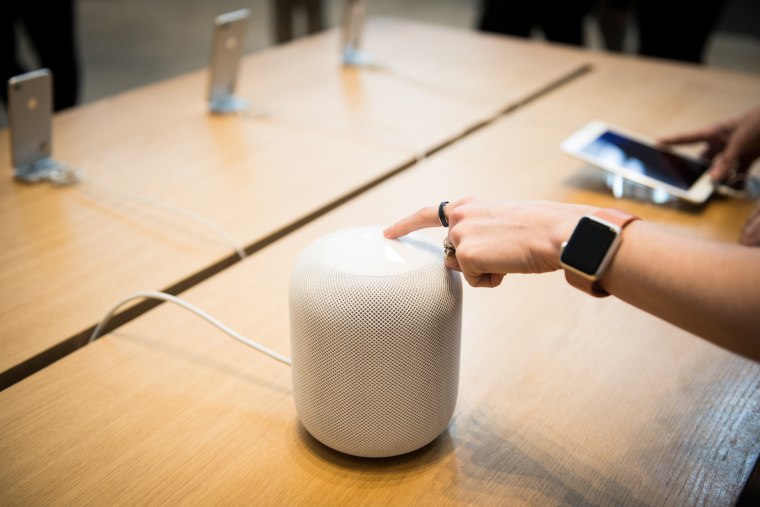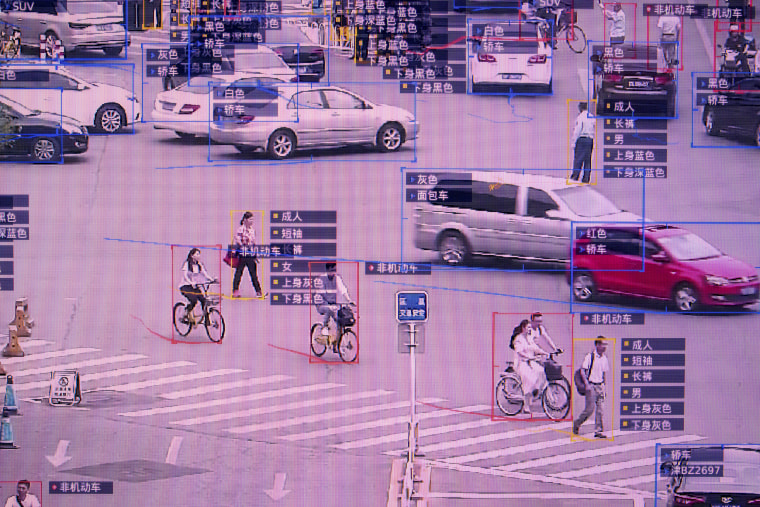Almost two years after China first laid out its plan to become the world leader in artificial intelligence by 2030, the United States on Monday released its own playbook.
The document, an executive order from President Donald Trump, explained his administration’s views on developing artificial intelligence, but left open a major question: Where’s the money?
“Money talks when it comes to government priorities, and new money actually drives priorities.” said R. David Edelman, a former special assistant to President Barack Obama for technology policy.
Trump’s executive order, which did not include any new funding for AI research, comes amid mounting tension over China’s ambitious efforts. China in 2017 laid out a national plan to try to develop AI technology, an ambition that was likened to the Apollo missions to the moon and set off anxiety within the U.S. as the Trump White House was silent.
“It’s kind of a new arms race,” said Theresa Payton, chief information officer under President George W. Bush.
But AI isn’t just about weaponry. The technology is seen by many policymakers, technologists and scholars as having a key role in the future of business, governance and just about any other part of human life, posing difficult questions about the tradeoffs between unrestricted growth and the need to keep pace with an international rival.
“The arms race use to be about weaponry,” Payton said. “But who is going to be the economic powerhouse? A lot of that is going to rest on who owns and controls the latest technology.”
Follow the leader
Though it may be best known from movies about killer robots, AI in real life is being developed to help automate a variety of tasks from the difficult to the mundane. Researchers are programming AI to help diagnose diseases, improve internet services, speed up transportation and more accurately target weapons in war. AI is generally understood as computer code that can improve its capabilities over time based on the data it is fed.
China’s plan put the world on notice about the country’s AI ambitions, but it also served to highlight the head start that the U.S. had gained. Much of the world’s leading research in AI takes place within private U.S. companies such as Google, and Trump’s executive order does not lay out a plan to change that.
And the U.S. continues to be the top destination for global investment in AI startups. CB Insights, a firm that tracks venture capital spending, found that more than half of the $19.2 billion invested in AI startups in 2018 went to companies based in the U.S.
Instead, the order tells heads of federal agencies to consider AI as a priority when drawing up plans for research and development. Unless Congress appropriates money, agencies will have to find it by cutting others parts of their budgets, and it’s not clear what they might cut or when.
The executive order is the first attempt by the Trump administration to lay out its views about artificial intelligence. It says AI “promises to drive growth” and that the US must “maintain leadership” in the field, and it puts agencies on notice that the White House expects them to pay attention to the subject. It also encourages the availability of big data sets that could be used to train AI. systems.
To the extent agencies find money, it would go toward research as well as programs for educational and workforce training, according to the executive order. But the lack of money amounts to an “unfunded mandate,” Payton said.
Asked about the absence of new money, a Trump administration official, speaking on the condition of anonymity because they were not authorized to speak publicly, said federal agencies will be required to report on their funding plans to White House officials, ensuring compliance with the order.
With regard to Chinese competition, the official said the administration welcomes collaboration with like-minded partners to promote the beneficial uses of AI and also to protect the U.S. technological advantage in AI from adversarial nations.
A hornet's nest of regulation
Experts who spoke with NBC News said they took China seriously as a competitor in the development of AI but noted that public perception of China’s current capabilities had become overstated.
A paper last year from Jeffrey Ding, a researcher at the University of Oxford’s Future of Humanity Institute specializing in China’s AI strategy, concluded that the U.S. was well ahead of China in the field, with 33 percent of the world’s total AI capabilities compared to 17 percent for China.
“I think there’s significant overinflation of Chinese AI capabilities, especially among U.S. policy-making circles,” Ding said.
“I think that the U.S. has a number of structural advantages in both the chip industry that is driving a lot of the development of AI, as well as the number of AI experts and talented people who are contributing to fundamental innovations in the AI space,” he said.
Some are skeptical of labeling the competition as an arm’s race with one clear winner, arguing that China and the U.S. aren’t in a head-to-head competition like an athletic event. China could take the lead in specific applications and not others.
“It’s an incredibly broad set of technologies with an incredibly broad set of applications, so I think it’s difficult to say that this country is ahead of that one or this company is ahead of that one,” said Michael Chui, a partner at the McKinsey Global Institute, the research arm of the consulting firm McKinsey & Co. “It’s not like basketball where there’s just one score.”
The varied applications of AI are one of the reasons the technology can create a hornet’s nest for governments and regulators trying to figure out how to encourage its development while making sure it is not abused by private companies or by other countries.
Chris Meserole, a foreign policy fellow at the Brookings Institution in Washington, said China has already exported AI-powered facial recognition software to other countries, including ones with authoritarian governments.
“I’m not as worried about losing the arms race. I’m more worried about the human rights impact around the world,” he said. “China is using AI in ways that are undercutting human rights around the world, particularly in its own country.”
Sen. Mark Warner, D-Va., the vice chairman of the Senate Intelligence Committee, pointed out that Trump’s executive order did not address that issue — or similar actions by U.S. companies.

“It offers little concrete guidance on how the U.S. should respond to adversarial and malicious uses of AI technologies by state and non-state actors alike, nor does it address instances where American technology companies are working in and with adversary nations in ways that undermine civil liberties, privacy, and American leadership,” Warner said in a statement.
One of the ways the competition is expected to play out is with decisions about exports. U.S. laws restrict the export of certain technology with military applications, and AI researchers have wondered if their work could be a future target of tighter controls.
But given that the research is so sprawling, Edelman said it will be difficult for either country to put in place strict regulations if they want to keep pace.
“It’s next to impossible to reconcile the desire to win on AI research with the desire to keep AI under wraps.”
